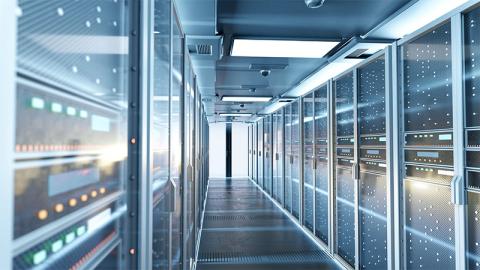Choosing the right HVAC sensors for your data center can have a significant impact on energy efficiency and power usage effectiveness (PUE). While sensor investment costs are relatively small, the impact on your energy use can be disproportionately large. The right sensor solution may depend on your monitoring needs – we will discuss what you need to consider when choosing sensors.
Small investment, big impact
The number of data centers is growing, with over seven million worldwide in 2022 and a 10% annual industry growth rate. Data centers are incredibly energy intensive, accounting for more than 1% of global energy consumption – and, with increasing computing power needed, this figure is expected to increase. Therefore, the need to lower data center power consumption and improve sustainability is increasingly urgent. HVAC sensors have a significant role to play in addressing this challenge.
Getting the balance right
Power usage effectiveness (PUE) is among the important figures to monitor if you’re looking to increase energy efficiency. It is defined as the ratio of total energy used in a data center and the energy used solely by IT. Ideally PUE would be close to 1.0, which would mean that all energy is spent on IT and almost nothing on anything else. To do this you need to minimize the consumption of supporting infrastructure, like cooling or power distribution. Historically, the typical PUE in a conventional data center has been around 2.0, whereas big hyperscale data centers have achieved a PUE below 1.2 or even less. In 2020 the global average PUE was 1.6, which would mean that on average 40% of energy was used for non-IT consumption.
As PUE is a ratio, it is a good idea to look at total consumption as well. It is also important to consider how the electricity is produced and whether renewable sources can be used, how the excess heat could be utilized, and how to reduce other environmental impacts like minimizing the amount of water used for cooling. In any case, one of the key drivers is minimizing energy consumption. The numbers are big: 1% of global energy consumed by data centers is a significant share, and even up to 40% of that energy is used for cooling and air conditioning. Fortunately, that figure can be improved with accurate measurements.
It all starts with a sensor
Sensors and transmitters have an essential role in building automation and building management systems (BMS). Sensors are crucially important, as everything the system does is based on measurements. The BMS monitors prevailing indoor and outdoor conditions through parameters such as temperature and humidity and performs controls. Precise indoor conditions can be accurately maintained only through accurate measurements, which you can fully trust throughout the life cycle of the building.
You might need additional sensors when you already have a BMS in place and you’d like to verify, monitor, and optimize your building systems – in this case you will benefit for a separate environmental monitoring system to monitor, map, and show trends. You may also want to report to third parties who should not access your BMS, for example to show that you have fulfilled service level requirements.
High-quality sensors allow you to optimize your indoor conditions and the energy efficiency of your site, and thereby directly influence your PUE. You will have more control of the conditions in your data center, helping you to achieve better indoor air quality, and you will improve your data center’s overall sustainability.
Choosing a sensor solution
There are several important criteria to consider when choosing a sensor solution, including reliability, stability, accuracy, and the needs of different spaces in your data center. Stability is the most important criterion; it means your sensor is accurate and reliable even in demanding environments, both now and in the long term. When you are buying sensors, the data sheets may state similar accuracies. It is easy to compare these numbers, but harder to understand and verify how accurate a sensor will be after one year, or a few years. All sensors drift, but some drift a lot or quickly, while others have good stability with minimal drifting, maintaining measurement accuracy for years. Therefore, stability of sensors should be clearly the most important criterion because it influences performance over a long time and is reflected in calibration and maintenance requirements.
Despite good stability, high-quality instruments are also easy to maintain, calibrate, adjust, and fine-tune. Having convenient tools available for verifying and maintaining the sensors and transmitters is about reliability and peace of mind throughout the life cycle. When you have a high-quality, reliable sensor that you can trust you have assets to optimize both your indoor environment and your energy use.
A sophisticated transmitter is also capable of providing calculated humidity parameters straight from the transmitter, for reliability and ease of system commissioning. Other factors to consider include modularity, exchangeable probes, and convenience – installation and commissioning should be flexible, while calibration and maintenance should be as easy as possible. A multi-use transmitter like the Vaisala HMT120 ticks all these boxes, allowing you to switch probes for calibration for example. The measurement probe is either attached to the transmitter itself, or attached by a cable so the transmitter can be somewhere easy to read while the measurement is close to the process it needs to measure.
Optimized energy efficiency and lifetime value
HVAC measurements have a critical role in control and monitoring, and measurement quality matters when it comes to your PUE. Reliability and stability mean accuracy in the long term, which should be taken into consideration already upon instrument selection. In a nutshell, investing in high-quality measurement instruments just makes sense. It is a minor investment in the context of a data center project, but the value that you get from high-quality measurements is so much bigger. You can trust the measurement, now and in the future, helping you to reach the best possible PUE and a sustainability boost.
To find out more about optimizing data center performance with sensor selection, watch our webinar or get in touch.



